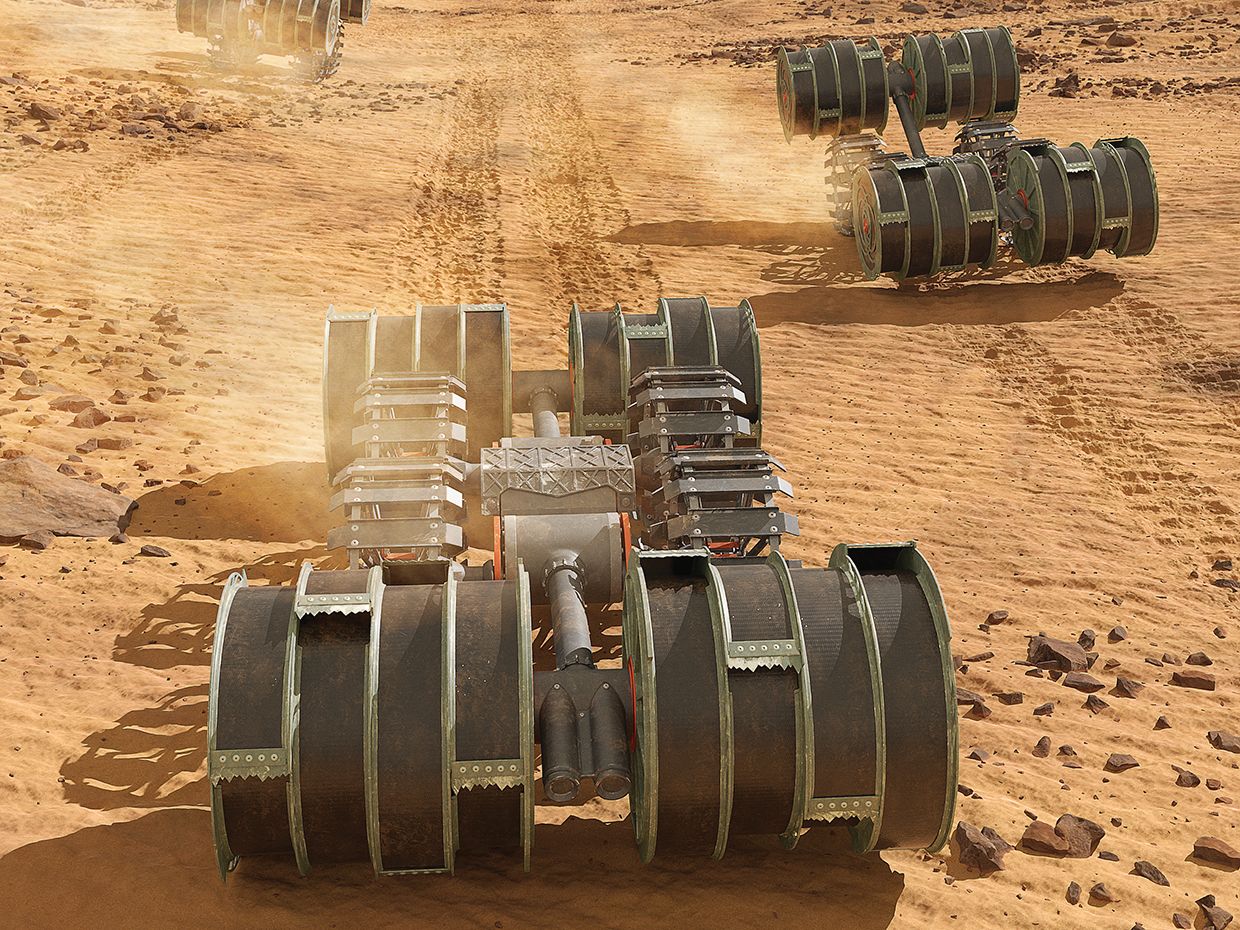
This artist’s rendering shows excavating robots that may one day operate on Mars, long before humans ever set foot on the planet.
Illustration: Marek Denko/NoEmotion
The year is 2038. After 18 months living and working on the surface of Mars, a crew of six explorers boards a deep-space transport rocket and leaves for Earth. No humans are staying behind, but work goes on without them: Autonomous robots will keep running a mining and chemical-synthesis plant they’d started years before this first crewed mission ever set foot on the planet. The plant produces water, oxygen, and rocket fuel using local resources, and it will methodically build up all the necessary supplies for the next Mars mission, set to arrive in another two years.
This robot factory isn’t science fiction: It’s being developed jointly by multiple teams across NASA. One of them is the Swamp Works Lab at NASA’s John F. Kennedy Space Center, in Florida, where I am a team lead. Officially, it’s known as an in situ resource utilization (ISRU) system, but we like to call it a dust-to-thrust factory, because it turns simple dust into rocket fuel. This technology will one day allow humans to live and work on Mars—and return to Earth to tell the story.
But why synthesize stuff on Mars instead of just shipping it there from Earth? NASA invokes the “gear-ratio problem.” By some estimates, to ship a single kilogram of fuel from Earth to Mars, today’s rockets need to burn 225 kilograms of fuel in transit—launching into low Earth orbit, shooting off toward Mars, slowing down to get into Mars orbit, and finally slowing to a safe landing on the surface of Mars. We’d start with 226 kg and end with 1 kg, which makes for a 226:1 gear ratio. And the ratio stays the same no matter what we ship. We would need 225 tons of fuel to send a ton of water, a ton of oxygen, or a ton of machinery. The only way to get around that harsh arithmetic is by making our water, oxygen, and fuel on-site.

